One-hit wonders of the 1980s
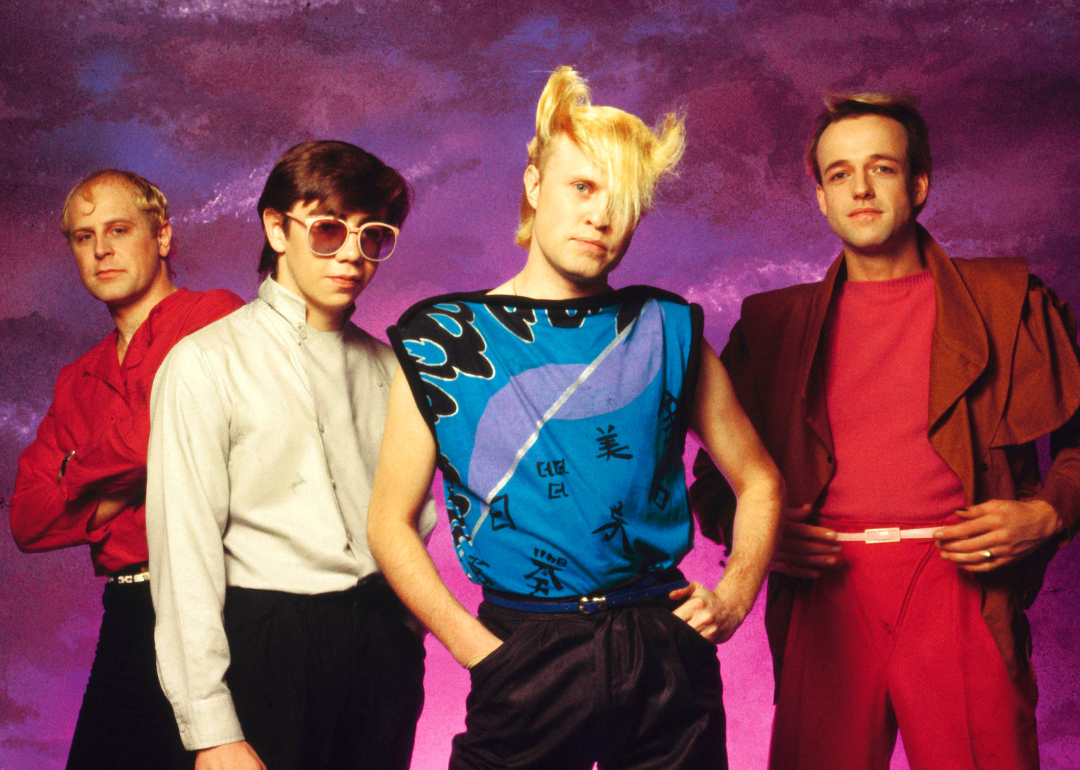
Fin Costello/Redferns // Getty Images
One-hit wonders of the 1980s
The band Flock of Seagulls pose for a portrait.
On July 12, 1979, disco’s decadelong reign over American music culture went up in smoke—literally.
Crowds had swarmed the White Sox stadium in Chicago that summer evening but not just for the old ball game. They were congregating to witness something else entirely: the organized demise of disco.
The premise was simple: bring a disco record to the stadium and get in to see the game for only 98 cents. The records were collected and placed in a large crate. After the end of the first game, the record-filled box was hauled to the middle of the field and blown up in front of roughly 48,000 spectators.
Vinyl shrapnel flew, and as the smoke began to clear, mayhem broke loose. Attendees rushed the field by the thousands, overwhelming security forces and forcing the White Sox to forfeit the following game. The event, known as Disco Demolition Night, marked not only the seeming end of the ’70s musical trend but also the violent backlash to the cultural dominance of a genre led largely by Black, Latinx, and queer artists.
Thus, the 1980s arrived in America clothed in leg warmers and blaring the sound of the new decade: synth-based dance tracks and the resurgence of rock ‘n’ roll, revitalized and hardened by the emergence of punk and metal. Television sets across the country broadcast MTV, heralding the cultural supremacy of the music video. New musical giants rose to the top of the charts: Michael Jackson, Madonna, Prince, Cyndi Lauper, Guns N’ Roses, AC/DC, Whitney Houston, and the Police.
But not all the big hits of the ’80s came from popular U.S. artists with established fan bases. Many of the defining songs of the decade were one-hit wonders. While some captured the hottest musical trends of the time, laying down synth earworms and euphoric dance tracks, others stood out as distinctly not of their time, featuring unusual instrumentation or nostalgic sounds of past decades. To honor the legacy of these anomalous songs, Stacker dug into the rich history of one-hit wonders—bands that had only one song top the U.S. charts—of the 1980s. Here are 25 songs that may take you back in time.
You may also like: Famous songs about every state
![]()

Gie Knaeps // Getty Images
A-ha: ‘Take on Me’
A-ha performing in concert.
The Norwegian band A-ha’s hit “Take on Me” remains a mainstay of ’80s-themed dance nights and karaoke bars around the world in large part due to its earworm of a synth riff, upbeat drums, and anthemic chorus. The song broke through to U.S. audiences, hitting the top spot on Billboard’s Hot 100.
The song’s fame was cemented by its legendary music video, which used then-new rotoscoping technology to create a hand-drawn form of animation. The video took months to create, but the payoff was massive: “Take on Me” won a staggering six trophies at the 1986 MTV Video Music Awards. While their song “The Sun Always Shines on T.V.” peaked at #20 in the U.S., A-ha didn’t have much more mainstream success on this side of the Atlantic, though they continued to chart in Europe.

Great American Films Limited Partnership
Bill Medley & Jennifer Warnes: ‘(I’ve Had) The Time of My Life’
Patrick Swayze and Jennifer Grey in a scene from the film ‘Dirty Dancing’
“(I’ve Had) The Time of My Life” was just one of many demos the “Dirty Dancing” team considered for the climactic final scene of the 1987 indie romance. According to the film’s producer and writer Eleanor Bergstein, the production was just one day away from shooting the finale and still didn’t have the perfect song for Jennifer Grey and Patrick Swayze. She envisioned a song that merged sounds of the ’60s, in which the film is set, and the ’80s, when it would be released.
When she and the director, choreographer, and co-stars heard the demo for “(I’ve Had) The Time of My Life” the night before the shoot, they all began dancing, and it was immediately clear they had found their finale soundtrack. It was only after the scene was already shot that Bill Medley of the Righteous Brothers and Jennifer Warnes recorded the track. To match the emotional intensity and timing of the choreography, the two watched the film’s final scene while recording. The iconic song hit #1 in five countries and cemented the film’s status as a classic.
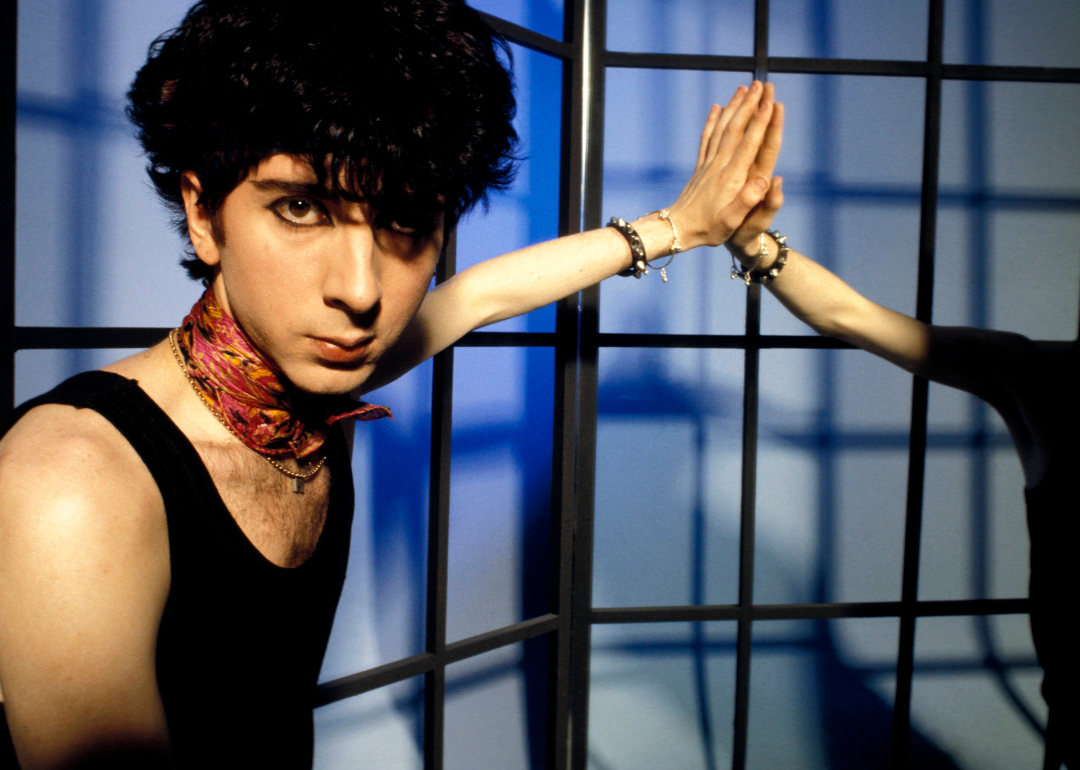
Fin Costello/Redferns // Getty Images
Soft Cell: ‘Tainted Love’
Marc Almond of the band Soft Cell poses for photograph.
“Tainted Love” was originally recorded in the ’60s by Gloria Jones, but the song didn’t get much play until the British duo Soft Cell covered it in 1982. The dark new wave track cracked Billboard’s top 10 in the U.S., but Soft Cell never charted again after their hit. Marc Almond, Soft Cell’s lead singer, struck out on his own and found success as a solo artist. His 1989 duet with Gene Pitney, “Something’s Gotten Hold of My Heart,” topped the charts in Europe and New Zealand.
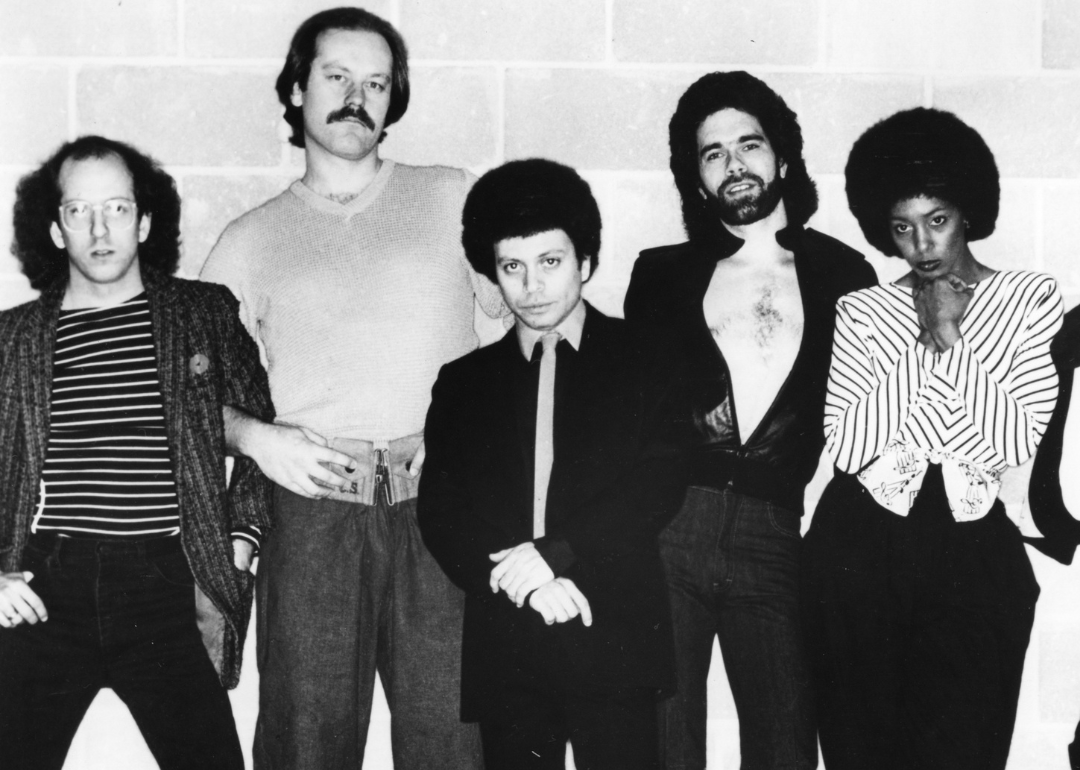
Michael Ochs Archives // Getty Images
Lipps Inc.: ‘Funkytown’
Members of the group Lipps Inc. pose for a portrait.
Released on the Minnesota-based Lipps Inc.’s album “Mouth to Mouth” at the tail end of the ’70s, “Funkytown” was a mainstay on U.S. charts for 11 weeks in 1980. Written by the band’s founder, Steven Greenberg, the song reflected his longing to move out of Minneapolis, whose music scene he described as “a very vanilla market.”
Lipps Inc. never had another smash hit like “Funkytown” and disbanded several years later; however, some of its members ended up in Prince’s circle and helped the artist shape Minneapolis into a hub of funky music.

Aaron Rapoport/Corbis // Getty Images
Rockwell: ‘Somebody’s Watching Me’
Kennedy William Gordy portrait
The son of Motown head Berry Gordy, Rockwell (Kennedy Gordy) wrote “Somebody’s Watching Me” after praying for a chart-topping song to come to him. After performing the demo for his childhood friend Michael Jackson, he recruited the King of Pop to sing background vocals on the track.
Jackson’s thematic and musical influences are evident in “Somebody’s Watching Me,” from the paranoia of “Thriller” to its sparkling synth sounds. The song topped the U.S. charts in 1984 and spent 20 weeks on the Billboard Hot 100. Rockwell had moderate success with another song, “Obscene Phone Caller,” but it never reached the fame of “Somebody’s Watching Me.”
You may also like: Richest rock stars
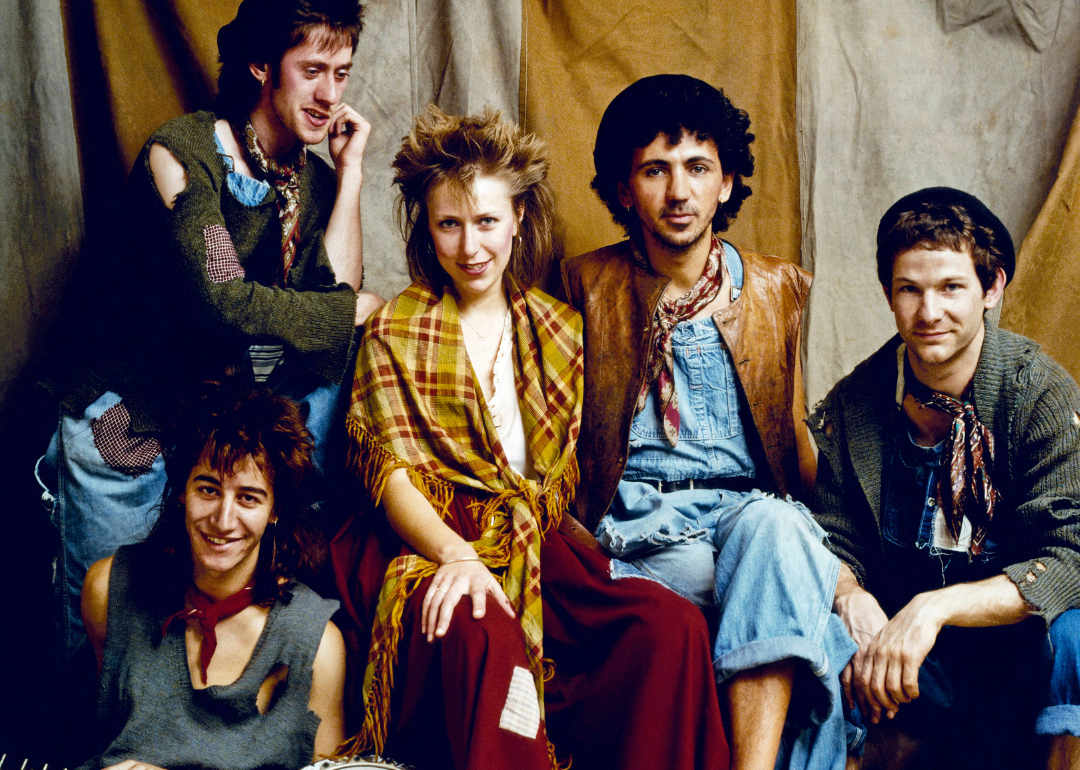
Brian Cooke/Redferns // Getty Images
Dexys Midnight Runners: ‘Come On Eileen’
Group portrait of the band Dexy’s Midnight Runners.
Based on a teenage romance Dexys Midnight Runners frontman Kevin Rowland had with a girl named Eileen, “Come On Eileen” knocked Michael Jackson’s “Billie Jean” from its reigning spot on the U.S. charts upon its release in 1982. The British band had odd aesthetics, both visually and musically, for its time: while the charts were mostly dominated by groups sporting sparkling glam rock outfits and playing synth-heavy dance hits, Dexys Midnight Runners brought Celtic sensibilities—complete with overalls, fiddles, and accordions—to the forefront of American pop music. The group did not sustain the success they experienced with “Come On Eileen,” however, and were mostly forgotten by American listeners.

Paul Natkin // Getty Images
The Weather Girls: ‘It’s Raining Men’
Izora Armstead and Martha Wash of The Weather Girls perform onstage.
Originally written for Donna Summer by songwriters Paul Jabara and Paul Shaffer, the song was eventually rejected by the Queen of Disco because she was a newly born-again Christian and found the lyrics “blasphemous.” Jabara and Shaffer then brought “It’s Raining Men” to a duo called Two Tons O’ Fun, who decided to take it on and even changed the name of their group to the Weather Girls after the song became a hit. It was subsequently claimed as a gay anthem. Unable to follow the song with another hit, the Weather Girls parted ways later in the decade.

Clare Muller/Redferns // Getty Images
Madness: ‘Our House’
Madness pose during the filming of video to their single ‘Our House’.
British ska band Madness found success in the U.K., but in the U.S., its reception was lukewarm, with “Our House” being the only song to break through to the top of the charts. The song, a nostalgic celebration of mundane, middle-class life, contrasted with the economically depressed time.

Paul Natkin // Getty Images
Twisted Sister: ‘We’re Not Gonna Take It’
Dee Snider of the group Twisted Sister poses for a portrait.
This protest anthem came out as the heavy metal genre roared onto the American music scene. Twisted Sister frontman Dee Snider took years to write the lyrics, which he envisioned as a rock anthem for the downtrodden in the spirit of Alice Cooper. Though “We’re Not Gonna Take It” mainly had hard rock influences, Snider admitted that the melody of the song’s chorus was inspired by the Christmas carol “O Come, All Ye Faithful.”
In 1985, the newly formed Parents Music Resource Center, a group of political insiders led by Tipper Gore who wanted warning labels attached to music with strong language, came after Twisted Sister’s song, leading to a showdown in Congress between Snider and the group.

Fin Costello/Redferns // Getty Images
The Buggles: ‘Video Killed the Radio Star’
Geoff Downes and Trevor Horn of The Buggles pose for a portrait.
Inspired by science fiction, “Video Killed the Radio Star” was released at the end of 1979 and has been seen as a prophetic view of the decade to come: an era defined by the emergence of the music video as a maker or breaker of the success of a song. In 1981, MTV launched, and the first music video broadcast on the network was none other than “Video Killed the Radio Star.”
The song was a smash hit worldwide when it was released in 1979, but it received renewed attention in the U.S. after it aired on MTV, though it never technically cracked into the top of the U.S. charts.
You may also like: Ranking the Beatles’ solo albums
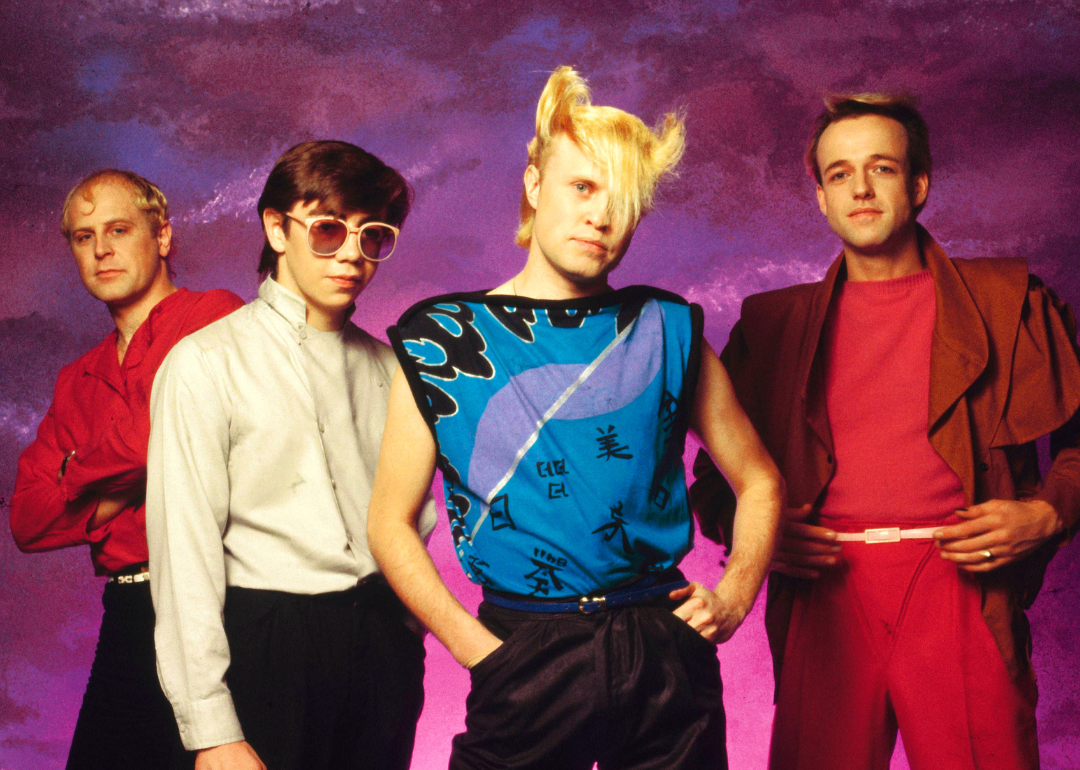
Fin Costello/Redferns // Getty Images
A Flock of Seagulls: ‘I Ran (So Far Away)’
The band Flock of Seagulls pose for a portrait.
Another science fiction-inspired song of the early ’80s, “I Ran (So Far Away)” was written about a hypothetical alien invasion and had an eccentric music video to match. The song’s success, largely generated by its frequent airing on MTV, was a first for British new wave group A Flock of Seagulls. The music video features the band in a room covered in aluminum foil and mirrors, as if inside a spaceship. Despite the song’s catchiness and flashy music video, one aspect of the band stole the public’s attention: the band members’ hair. Both lead singer Mike Score and bassist Frank Maudsley were hairdressers. The two created eye-catching coifs that cemented their place in popular culture.

Lynn Goldsmith/Corbis/VCG via Getty Images
Dead or Alive: ‘You Spin Me Round (Like a Record)’
The band Dead or Alive pose for a studio portrait.
“You Spin Me Round (Like a Record)” was the result of a covert collaboration between the British group Dead or Alive and the production trio S.A.W. (Mike Stock, Matt Aitken, and Pete Waterman). The two groups teamed up after Dead or Alive’s record label didn’t give the group the support they needed to record the song. Dead or Alive’s lead singer Pete Burns reportedly took out a loan to pay for the production.
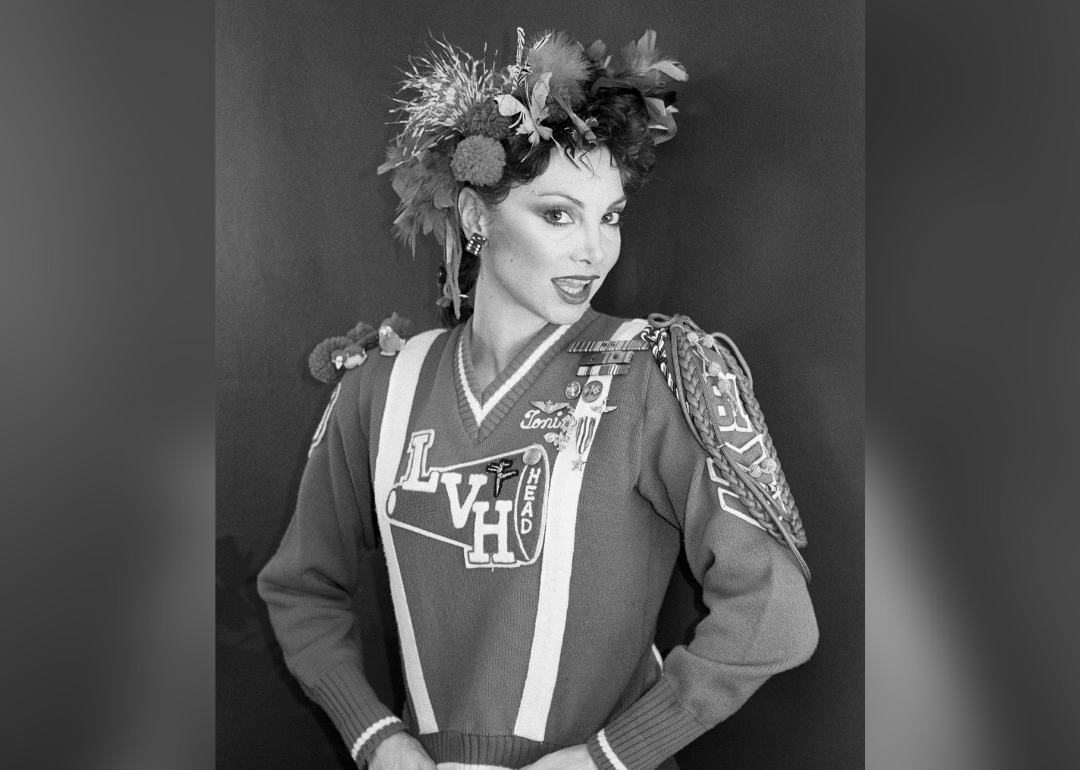
PA Images via Getty Images
Toni Basil: ‘Mickey’
Toni Basil poses for a portrait.
Ex-cheerleader, choreographer, and singer Toni Basil reinterpreted the 1979 Racey song “Kitty” as “Mickey” and created an iconic cheerleading music video to match. The song reached #1 on the Billboard Hot 100, inspiring loyal fans of the song, as well as some “Mickey” rumors about who—and what—the song was about. After the song’s release, speculation swirled about whether the titular Mickey was referencing Micky Dolenz of the Monkees, whom Basil met while working on a music video for the band. Another conjecture, stoked by music critic Robert Christgau, spread about whether a certain sex act was implicitly referenced in the song. Basil has dismissed both rumors as untrue.
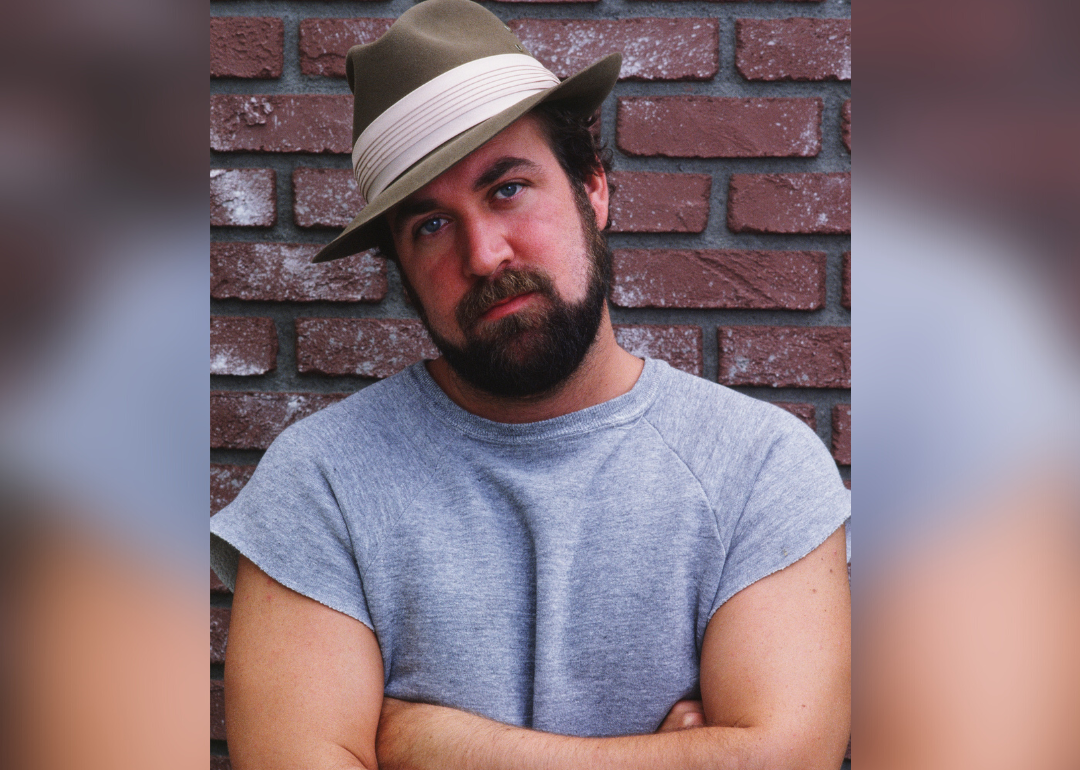
George Rose // Getty Images
Michael Sembello: ‘Maniac’
Michael Sembello poses for a portrait.
“Maniac” was prominently featured in the Jennifer Beals starrer “Flashdance” and has become a quintessential dance track about dancing. The song almost went in a different direction, however. Michael Sembello, inspired by the serial killer film “Maniac,” originally wrote the song about a homicidal man. However, after “Flashdance” music supervisor Phil Ramone heard the song, he collaborated with Sembello to change the lyrics to suit the film’s plot.
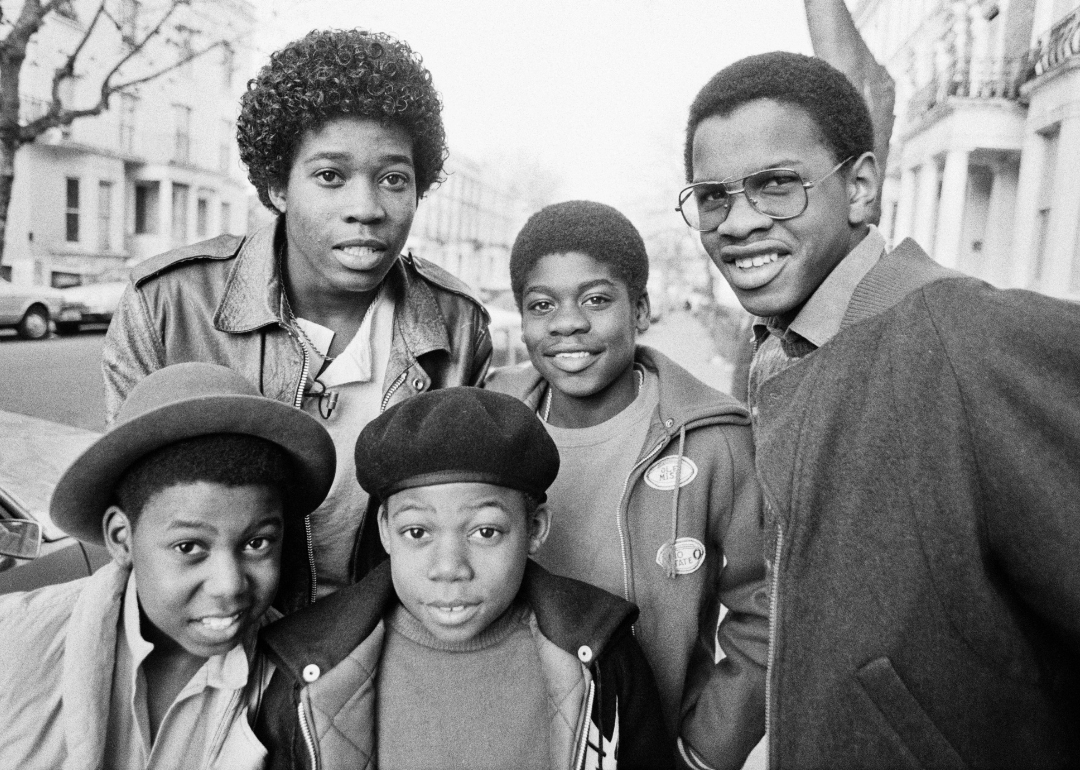
Michael Putland // Getty Images
Musical Youth: ‘Pass the Dutchie’
The band Musical Youth pose for a portrait.
“Pass the Dutchie” was a re-imagined cover of the Jamaican band the Mighty Diamonds’ song “Pass the Kutchie.” Since the original track was about passing around a pipe, and the members of Musical Youth were kids, the lyrics were changed slightly to reference a different type of pot: a Jamaican cooking pot called a dutchie. The reggae song was a hit, both in the U.S. and in Musical Youth’s native U.K., and the band was one of the first Black groups to be regularly aired on MTV. In 2022, “Pass the Dutchie” was featured in the hit Netflix series “Stranger Things,” exposing the song to a new generation of listeners.
You may also like: Iconic one-hit wonders over the past 50 years
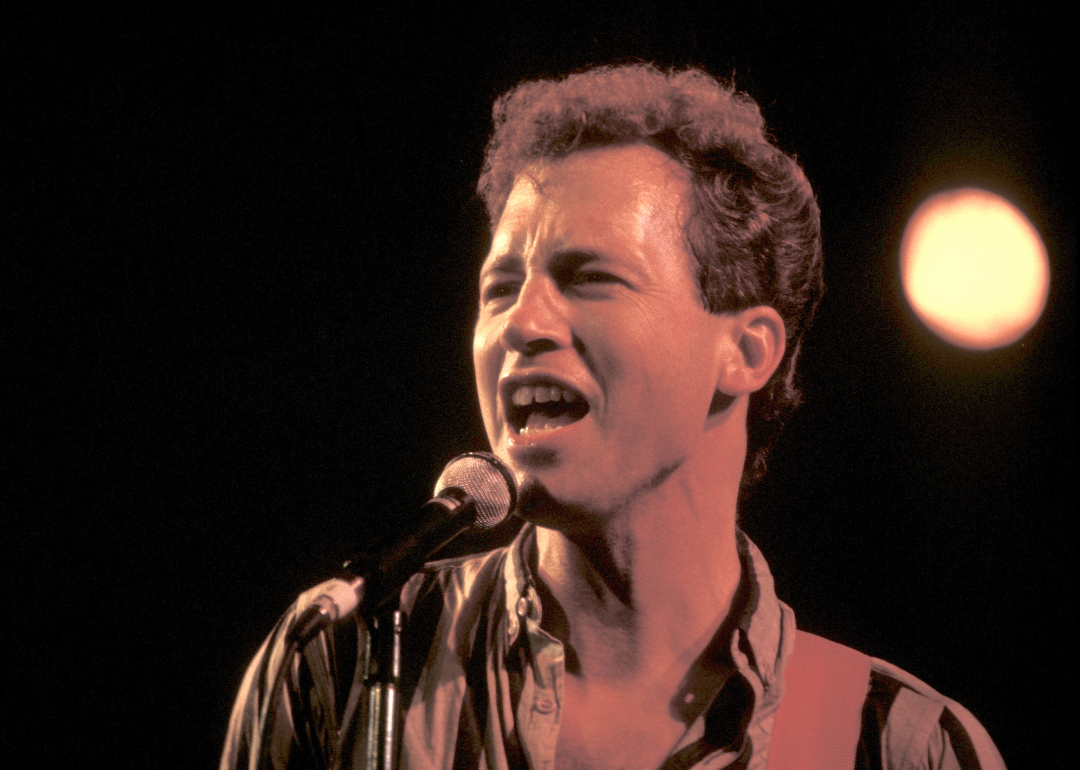
John Atashian // Getty Images
Tommy Tutone: ‘867-5309 / Jenny’
Tommy Tutone performing in concert.
When songwriter Alex Call came up with the song “867-5309 / Jenny,” he was sitting in his yard and didn’t initially plan for the story or mythology that would accompany the finished track. He didn’t even plan for the phone number to be written on a bathroom wall, an idea that came later from Tommy Tutone guitarist Jim Keller. Keller wrote the rest of the song, and “867-5309 / Jenny” quickly became a hit. The song was so popular that countless people dialed the number and asked for Jenny, a major source of annoyance to those who had the number.

Chris Walter/WireImage // Getty Images
Devo: ‘Whip It’
Devo performing onstage.
Commonly misinterpreted as sexual innuendo, “Whip It” was actually written as political satire. According to Jerry Casale, Devo’s lead vocalist, the song was inspired by the writings of Thomas Pynchon, which critiqued American capitalist ideals and cliches using humor. Parts of the song were inspired by the ’60s tune “Oh, Pretty Woman.” After briefly disbanding in the early ’90s, Devo reunited in 1996 and has been performing since.

Paul Natkin // Getty Images
Modern English: ‘I Melt with You’
Robbie Grey of Modern English performing on stage.
Modern English was formed in 1977 after the Sex Pistols burst onto the punk scene, inspiring the group with their aesthetic and worldview. The song has maintained its popularity since its 1982 release, cropping up in films including “Valley Girl,” “50 First Dates,” and “Mr. and Mrs. Smith,” as well as television shows like “Glee” and “Stranger Things.” “I Melt with You” has also been covered numerous times by various artists. According to Robbie Grey, Modern English’s lead singer, the song’s bleak imagery was inspired by England’s gray weather.

Peter Bischoff // Getty Images
Nena: ’99 Luftballons’
Nena performing in concert with balloons.
When Berlin-based band Nena released “99 Luftballons” in 1983, it was a worldwide hit, including in the U.S. The song was popular enough that the band released an English language version, though, surprisingly, the German version remained more popular in the States. Nena disbanded a few years after the hit, but lead singer Gabriele Kerner has continued to make music independently.
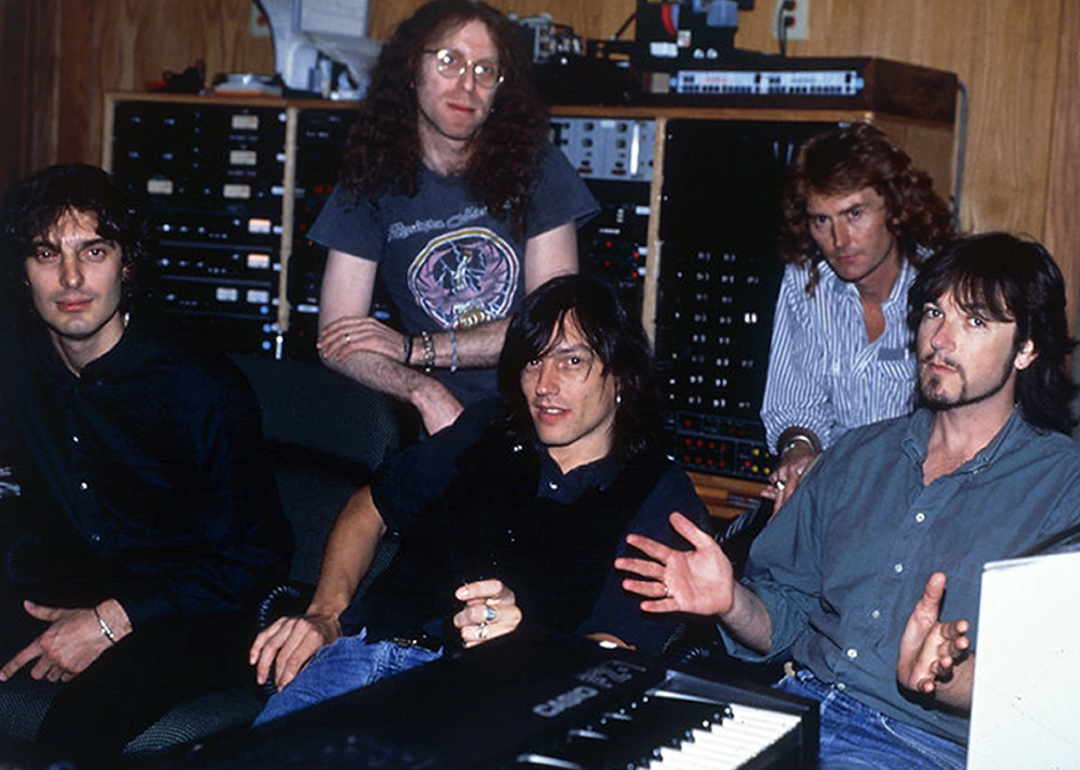
Anna Krajec/Michael Ochs Archives // Getty Images
The Church: ‘Under the Milky Way’
The Church pose for a photo in a recording studio.
According to the Church’s frontman, Steve Kilbey, “Under the Milky Way” is “not about anything” but is rather “a blank, abstract canvas for people to lose themselves in.” By far the Australian band’s biggest hit, the song was also a source of contention among the band members; after fans began leaving their performances once they had played “Under the Milky Way,” the Church stopped playing the song live.
You may also like: 30 pop songs you may not know are covers
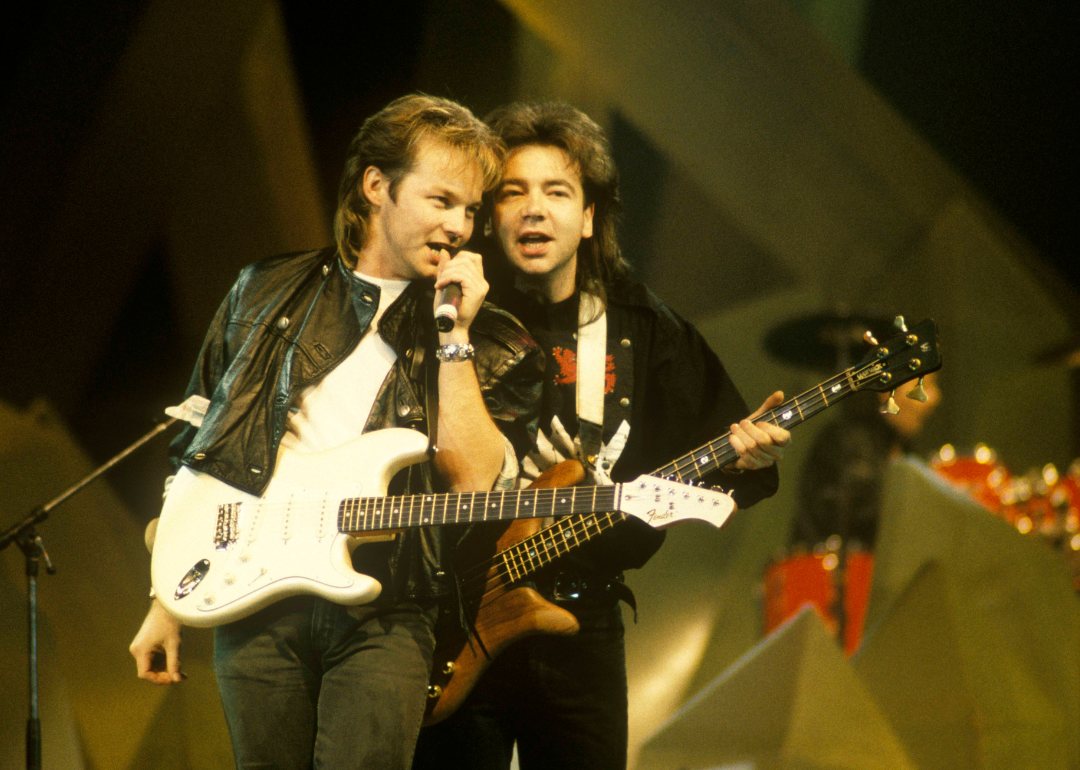
Fin Costello/Redferns // Getty Images
Cutting Crew: ‘(I Just) Died in Your Arms’
The band Cutting Crew performing in concert.
The blend of passion with darker themes in “(I Just) Died in Your Arms” has sustained the song’s emotional resonance since its release in 1986, making it a frequent choice for film and television shows. The song has been included in “Stranger Things,” “Euphoria,” and “Never Been Kissed,” among many others. Cutting Crew’s lead singer, Nick Van Eede, has said “(I Just) Died in Your Arms” was inspired by a complicated former relationship. Though the band broke up in 1993, it has undergone several new iterations and is still releasing new music.
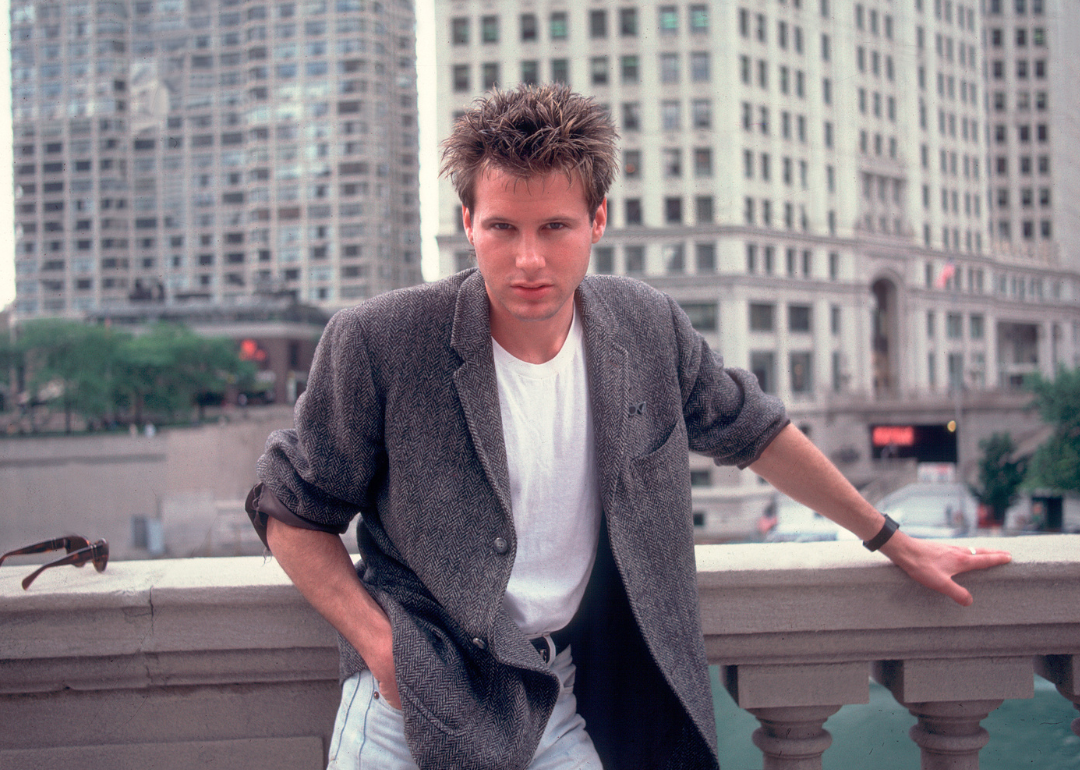
Paul Natkin // Getty Images
Corey Hart: ‘Sunglasses at Night’
Corey Hart poses for a photo in Chicago.
Canadian singer Corey Hart wrote “Sunglasses at Night” after completing the recordings for his debut album, “First Offense.” However, he was so excited about the song that he convinced his label to include it on the album. The song launched him into the spotlight and is still what he is known for, though his song “Never Surrender” also broke into the top 10 of Billboard’s Hot 100. Hart has since remixed and rerecorded the song and released new music.
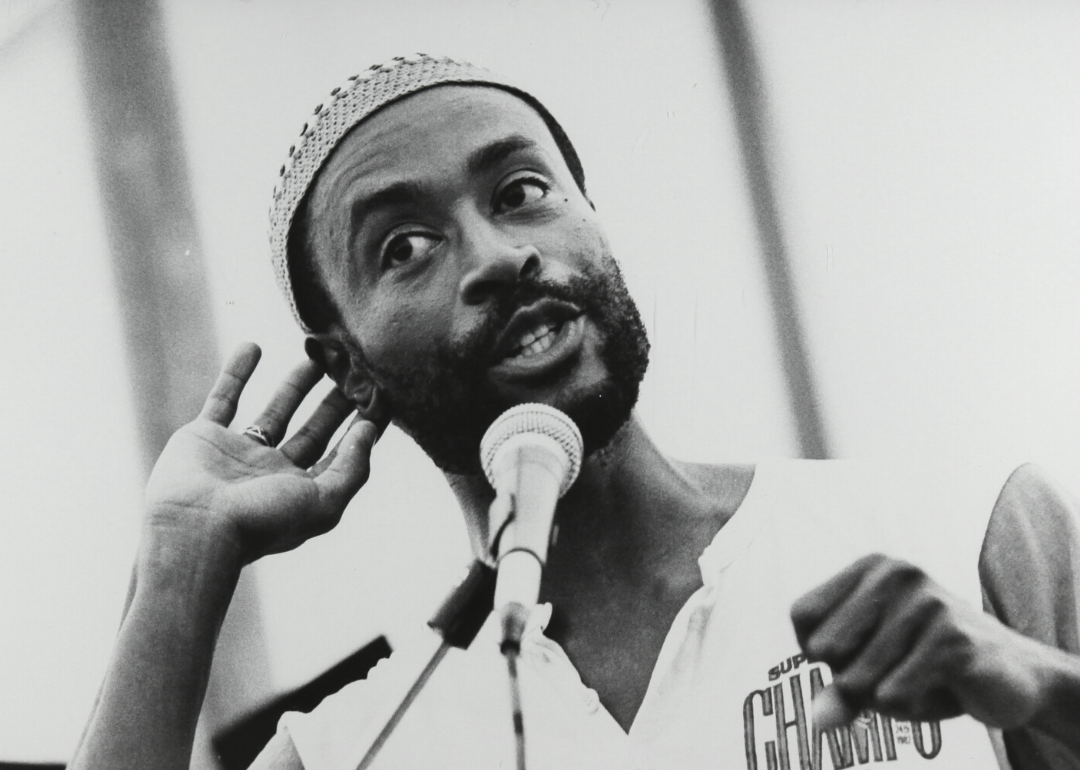
National Jazz Archive/Heritage Images // Getty Images
Bobby McFerrin: ‘Don’t Worry Be Happy’
Bobby McFerrin performing at festival.
Bobby McFerrin’s “Don’t Worry Be Happy” was the first song without instrumentals to take the top spot on Billboard’s Hot 100. The song’s music video, also a hit, frequently played on MTV. Despite winning several Grammys, “Don’t Worry Be Happy” was McFerrin’s only hit. In the intervening years, many have attributed the song to Bob Marley, despite the fact that Marley died years before “Don’t Worry” was released.

Ebet Roberts/Redferns // Getty Images
The Proclaimers: ‘I’m Gonna Be (500 Miles)’
The Proclaimers performing on stage.
The Proclaimers, made up of the Scottish twins Craig and Charlie Reid, wrote “I’m Gonna Be (500 Miles)” in a 45-minute burst while waiting to play a gig. The song became a global hit but surged to the top of the U.S. charts after it was used in the 1993 Johnny Depp film “Benny & Joon.” “I’m Gonna Be (500 Miles)” is instantly recognizable for its distinctive marching beat and heavy Scottish accents. The song has even been informally adopted as a Scottish anthem and is still frequently played at big Scottish sporting events.
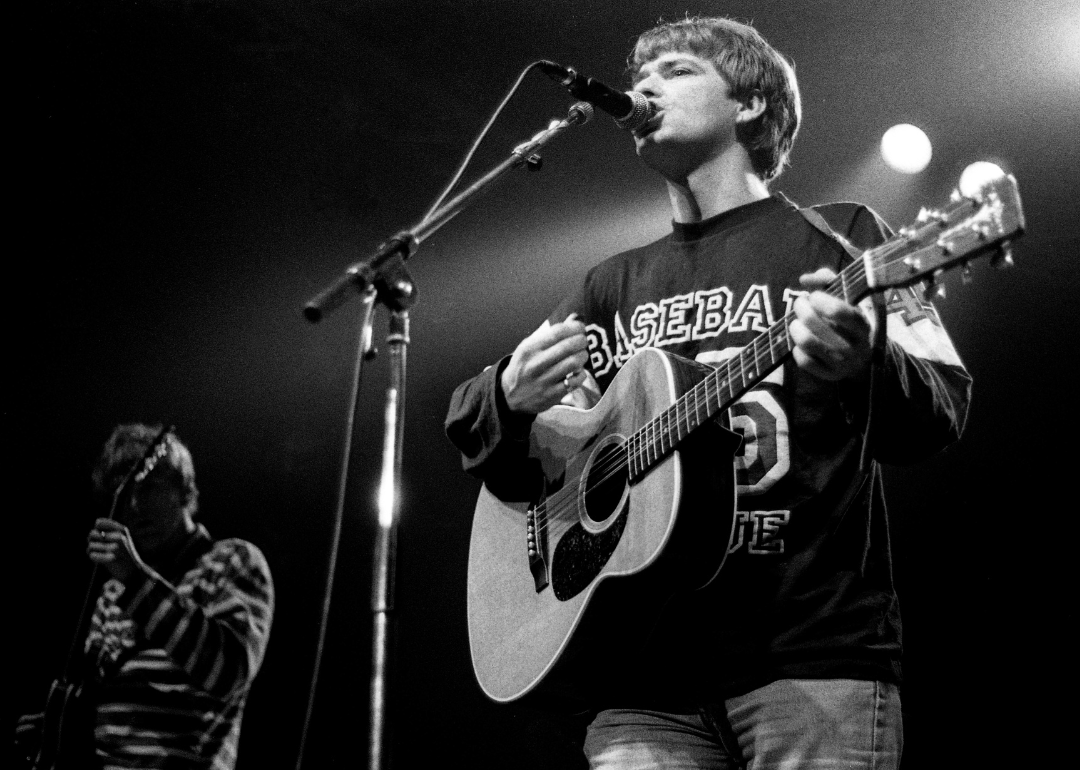
Martyn Goodacre // Getty Images
The La’s: ‘There She Goes’
Lee Mavers of The La’s, performs on stage.
“There She Goes” was rumored to be about heroin use due to speculation about lyrics like “pulsing through my veins” and “racing through my brain.” Although this claim has been denied by several former band members, Lee Mavers, the band’s legendary guitarist, did, in fact, suffer from addiction to the substance in the ’90s. Despite this controversy, the song has been used in numerous films, including “The Parent Trap,” “Girl, Interrupted,” and “Fever Pitch.”
You may also like: Lyrics to 50 famously misunderstood songs, explained



